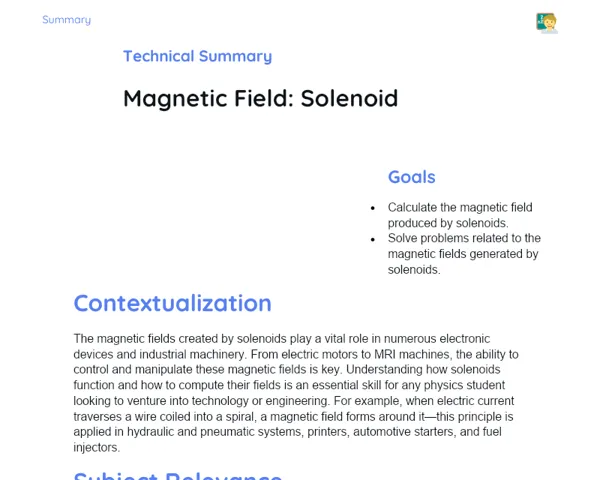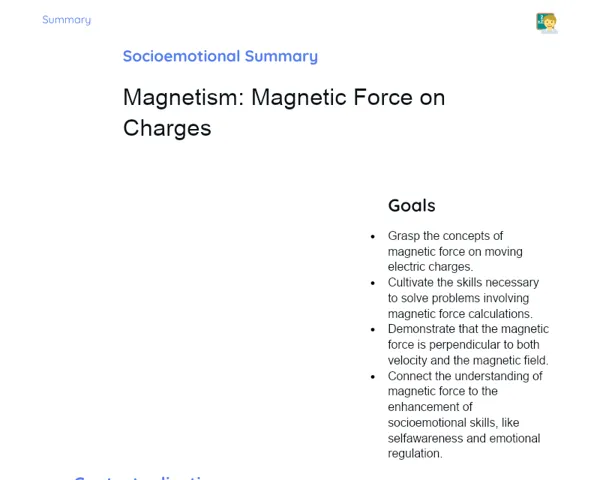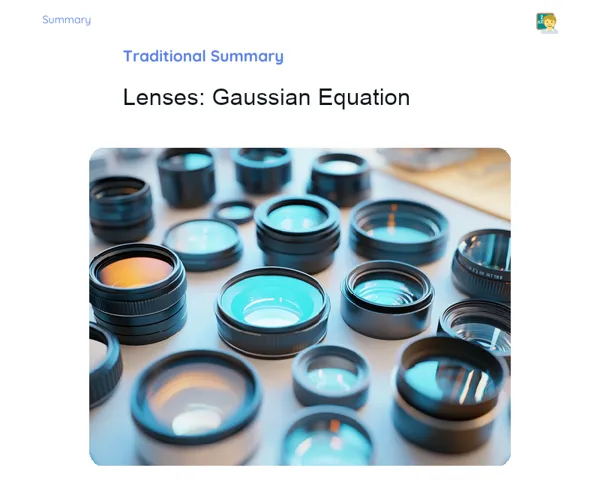Socioemotional Summary Conclusion
Goals
1. 💡 Understand that when an object follows a path, it moves and its position changes.
2. 🔢 Calculate the change in position between two distinct moments in a path, such as an object moving from position 2 to position 5.
Contextualization
🌍 Imagine watching a thrilling race. The cars skillfully navigate the track, their positions changing with every curve. This shift in position is precisely what we are exploring in kinematics! Understanding how objects move and change their position isn't just intriguing; it's crucial in areas like engineering, sports, and even our everyday experiences. Let's uncover together how to calculate these changes and how they are relevant in our lives! 🚗💨
Exercising Your Knowledge
Definition of Kinematics
Kinematics is a branch of Physics that examines the motion of objects without considering what causes the movement. It focuses on key quantities that describe motion, including position, velocity, and acceleration. Grasping kinematics is vital for comprehending how objects move in space, which is fundamental in various sectors like engineering and sports.
-
🤔 What is Kinematics: The science that describes the motion of bodies without delving into the causes behind it.
-
🔭 Importance: Vital for understanding movements in disciplines such as engineering, robotics, sports, and even our daily routines.
-
🧮 Involved Quantities: The main quantities studied in kinematics include position, velocity, and acceleration.
Change in Position
Change in position refers to the difference between an object's final and initial position along its path. It is a scalar quantity, which means it deals only with the numerical value of the change in position, without considering the direction of movement.
-
📏 What is it: The difference between the final position and the initial position of a moving object.
-
🔢 Formula: ΔS = S_final - S_initial, where ΔS represents the change in position.
-
📏 Units: Typically measured in meters (m).
-
📊 Importance: It helps describe how and how much an object has moved.
Trajectory
A trajectory is the path that an object takes during its motion. Unlike the change in position, the trajectory captures the entire route of the motion, including all shifts in direction.
-
🔄 What is it: The path taken by an object that is in motion.
-
📏 Relevance: It helps us understand the entire route of an object, beyond just the starting and ending points.
-
🌐 Practical Applications: Critical for route planning in engineering and transportation.
Key Terms
-
Kinematics
-
Change in Position
-
Trajectory
-
ΔS (Delta S)
-
Scalar Quantity
For Reflection
-
🤔 How can understanding the change in position help you plan daily activities, such as commuting to school more efficiently?
-
💭 What emotions did you experience while learning and calculating the change in position? How did these emotions influence your learning?
-
🌐 How could knowledge of kinematics be applicable in your future career? Think about fields like engineering, sports, or any area that excites you.
Important Conclusions
-
🚗 We learned that kinematics is essential for describing how bodies move, without considering what drives those movements.
-
📏 We discovered how to calculate the change in position of an object using the formula ΔS = S_final - S_initial.
-
🔄 We understood that the trajectory represents the complete path taken by an object in motion, which differs from the change in position.
-
🎯 We applied theoretical concepts to real-life situations, such as measuring the change in position of objects, while developing socio-emotional skills to manage frustrations and challenges.
Impacts on Society
🌐 Kinematics significantly impacts our daily lives. Consider the technologies we rely on, such as cars, bicycles, and even lifts. All these devices depend on a solid understanding of kinematics principles to function effectively and safely. Without this knowledge, engineers and scientists wouldn't be able to design efficient and safe systems for our everyday use.
✨ Furthermore, the ability to measure and predict movement carries deep emotional implications. Think about an athlete needing to adjust their performance in a race or a dancer coordinating their movements with precision. Understanding kinematics not only boosts technical proficiency but also builds confidence and personal fulfillment. As we learn to control our own movements and those of surrounding objects, we develop greater self-assurance and the capacity to tackle challenges.
Dealing with Emotions
🧘♂️ To support you in managing your emotions while studying kinematics and its applications, we'll use the RULER method. First, Recognize how you feel when faced with a physics problem or making a measurement. Next, Understand the root causes of those feelings: what makes the task simple or complex for you? Name your emotions accurately, whether it’s frustration, anxiety, or excitement. Then, Express those feelings appropriately: this could involve discussing your thoughts with a classmate or jotting them down in a journal. Finally, Regulate your emotions with techniques like deep breathing or taking brief breaks during study sessions. Practice this at home and observe how it transforms your learning journey!
Study Tips
-
📚 Review Regularly: Revisit your notes and practice problems related to change in position and trajectory consistently to reinforce your understanding.
-
🧘♀️ Practice Mindfulness: Dedicate a few minutes each day to mindfulness exercises. This will boost your focus during studies.
-
👥 Study in Groups: Create study groups with your classmates. Discussing problems and concepts as a group can clarify doubts and offer different viewpoints.



